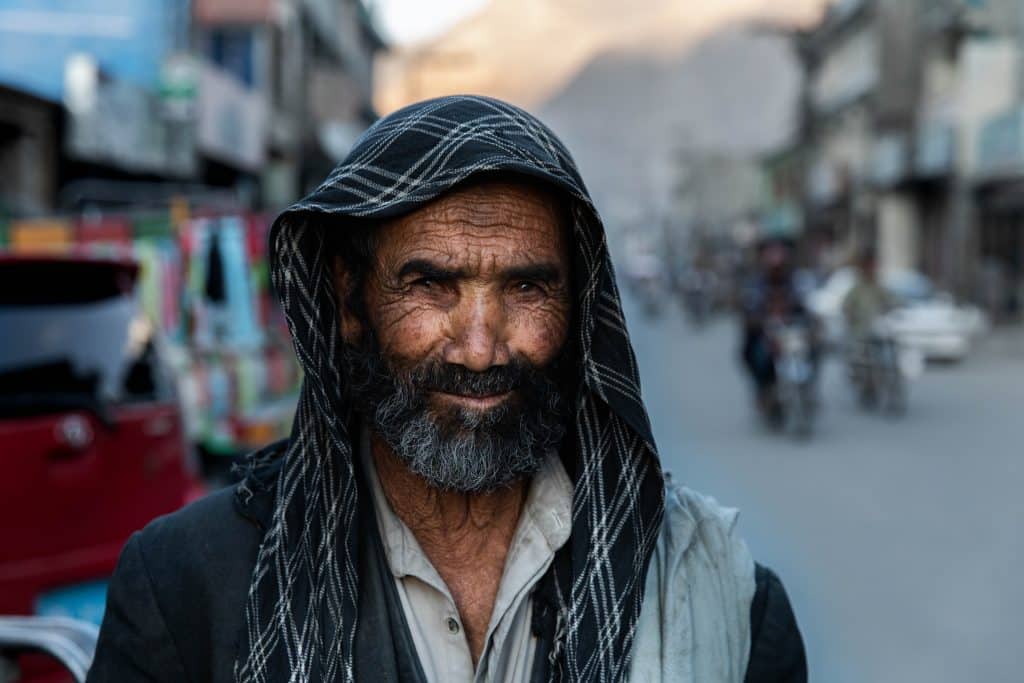It was the last evening in the Pakistani city of Skardu before we were to travel to Islamabad and from there back to Germany. We came back from Askole with the jeeps only the evening before and were pretty exhausted from the past weeks. Nevertheless, I wanted to make a last attempt to capture an impression of this stunning country and its people photographically.
After 2 weeks in the mountains, the curiosity was huge to learn even more about Pakistan and to dive deeper into unknown cultures. However, it takes a lot of effort to simply approach people in such a foreign country, especially with the desire to photograph them. So off I went with camera in hand and uncertainty in my gut, unaware of the profound, lasting imprint this evening would leave.
A cool breeze blew the dust from the vehicles through the air, leaving a slight grate on my teeth. The air was clear and the surroundings bathed in pleasant, warm light. Slowly the evening arrived and in a few hours the light would have disappeared together with the sun behind the horizon. This small window of time, however, was the last thing on my mind as I headed straight for a group of young Pakistanis. I greeted them with a friendly as-salāmu ʿalaikum, which was returned with a wa-ʿalaikumu s-salām.
As a non-Muslim, greeting with as-salāmu ʿalaikum can be a bit difficult in places. Sometimes you only get a curt wa- ʿalaikum back, depending on how conservative the person is. Fortunately, the group was very open-minded and curious. In addition, many Pakistanis speak fabulous English. They explained to me that if in doubt, I should rather say Merhaba, as it could sometimes be awkward for my counterpart. The Sunna of the Prophet Muhammad clearly forbids saying the greeting to non-Muslims. With younger people, however, this is mostly not a problem.
I felt pretty stupid, because I only wanted to greet people respectfully. I guess you only find out about such things in direct conversation, so I was grateful for this helpful information. It did not last long, until they addressed me on my camera and asked to shoot a photo of them. Sure, only too gladly! A short moment later, the photo was in the can. We said goodbye cordially and inspired by this experience I continued my adventure. In fact, it was not difficult at all to get into conversation with the people, because they approach you curiously by themselves and are happy about the interest for them and their country.
In front of me, there were just 5 young Pakistanis posing, while suddenly someone gently tapped me on the shoulder from behind. When I turned around, I saw an older man in front of me with a big smile on his face. His eyes looked like as if they had followed the entire history of mankind and his gaze seemed to trespass deep into my soul. From the first second I was bound, because his gaze had at the same time something incredibly loving. Deeply moved by his appearance, I needed a short moment to understand that he asked me to take a photo of him.
He posed and looked over at me expectantly, while the wrinkles on his face told dozens of stories about life itself. For the first time in my life, I could really feel a photo and it was as if my counterpart had remotely controlled the shutter at just the right moment. As I looked through the viewfinder, the world around me disappeared and there was only the moment. The camera only triggered once. Click! On the camera display the photo appeared and I was just speechless. Brazilian photographer Sebastião Salgado once said:
“You don’t just take a portrait. Someone else gives it to you”

Every time I look at this photo, I feel as if the emotions of that special moment have been transferred to the image and I could 100% understand what Salgado meant. During the evening I encountered numerous people who invited me to join them for a tee or curiously sought conversation. I would never have expected such personal and profound encounters.
Unfortunately, I did not think to write down people’s names, let alone ask them for their stories. For this reason, besides the memory, all that remains of this moment is the burning desire to not only take photos in the future, but also to get to know the stories behind the people- and of course the numerous portraits that were given to me that day.
